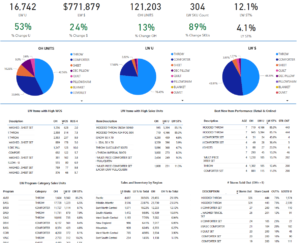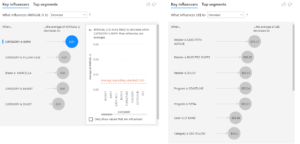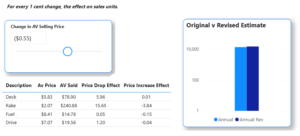Table of Contents
By Jim Lewis, CEO Enhanced Retail Solutions LLC
There’s a lot of talk about AI, and most people don’t really know how it can help or hurt their lives. In the business world, a set of digital eyes can be very valuable. That sounds very generic because it is. Most businesses are not experts in AI and in most cases, don’t have to be. The key is finding a partner who can help you understand whether it can have an impact on your business.
How to Put AI to Work for Your Business
You may have played around with ChatGPT with mixed results. The big tech giants are integrating ChatGPT and other AI related technologies into their platforms. These platforms do provide a lot of value but may still be too generic to be useful. Luckily there are many niche businesses (like ERS) that are curating it to their specific industry. This is where you might be able to take advantage of AI.
RetAIling
Retailers adopted AI early on to help target specific products to consumers. We take for granted now that “you may also like” list of items next to our cart or at the bottom of a retailer’s eCommerce site. Sometimes it’s right on, and other times you scratch your head wondering how it came up with that. Ever used Gmail in a browser and seen ads show up for things you wrote in an email? A little creepy to me- that’s AI at work as well.
On the back end, retailers and wholesalers care most about inventory. They want to make it as productive as possible while increasing profits. There are good inventory planning systems on the market, but virtually all of them fall short in one aspect or another. And every planner looks at a forecast in a slightly different way. Perhaps AI can learn what your planning philosophy is and adapt to it. It could also understand that planning for Amazon is very different than planning for Sam’s Club. Systems often offer platitudes, rather than practical application of a technology. In this example we are looking at POS data over time. It’s important to ensure items are attributed properly so that relationships can be made between sales and the attributes. We want to see what attributes affect sales to go up or down. These visualizations provide a lot of customization and you don’t have to be Einstein to figure them out.
Real World Practicality
The real strength of AI is finding trends, opportunities or liabilities that would otherwise go unnoticed. That is perfect for the retail world when you have millions of transactions and sku-store or sku-customer records. ERS’ first foray into AI was with the Retail Narrative system. It analyzes POS sales and inventory and then provides a dashboard to inventory planners and sales teams. It pinpoints opportunities and liabilities and then takes it a step further. Click on a statistic and it will provide more detail and a recommendation to improve performance. What once took hours now takes seconds. It works well because it was built by inventory planners- the same audience it is intended for.

Automated retail analytics- POS and inventory management
The Influencer visualization built into Microsoft’s PowerBI is great at finding things. In this example we are looking at POS data over time. It’s important to ensure items are attributed properly so that relationships can be made between sales and the attributes. We want to see what attributes affect sales to go up or down. These visualizations provide a lot of customization, and you don’t have to be Einstein to figure them out.

Use the PowerBi Influencer to help answer questions about your business
Learning what specific product attributes lead to greater (or weaker) sales may not be able to find on your own, but AI can tell you when a correlation is found enough of the time that it could be a trend. This can help with many aspects of planning including the assortment mix, allocation, and timing.
Curation
Maximizing the effectiveness of AI requires setting up data in a way to take advantage of it. This is where you want a partner who can integrate POS, ERP and other 3rd party data (Ex. Census Demographics). Here’s the same Influencer visualization adding regional data to it. The more data you add, the more relationships it can look for. These are tasks very hard for humans to find.

Using the Influencer Visualization in Microsoft Power BI to find retail trends.
Data Scientists can also write their own functions using AI concepts to answer specific questions. In this example we want to understand what happens to unit sales when the average selling price goes up or down. Price elasticity is very helpful to retailers to properly price items. ERS’ Item Planner, a ladder planning system has this type of intelligence built into. It lets the user select a price and then the system adjusts the estimated units and dollars based on historic trends.

Effect a price change has on sales
Taking Action
At the end of the day, AI should help us make better decisions. And at some point- just act for us. I don’t think we’re close to that yet, but the day will come. Data, retail best practices and intelligence can be combined to provide much smarter POS reporting. In this example, AI rates performance, determines inventory health and then makes recommendations based on the combination of those rankings.

Item performance report with actionable recommendations
ERS has great expertise in curating AI and other smart technologies into its reporting and inventory planning tools. Read more here.
If you’re struggling with how to start using AI in your business, contact us today.
The post Is AI Applicable to My Business? appeared first on Retail Sales & Inventory Reporting.







